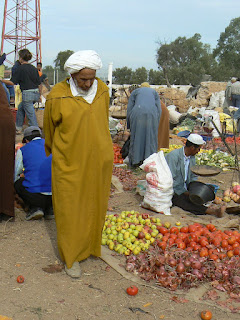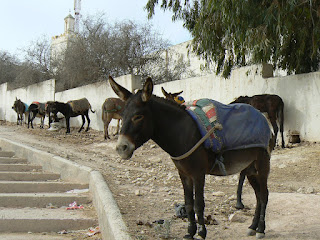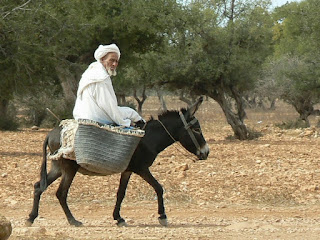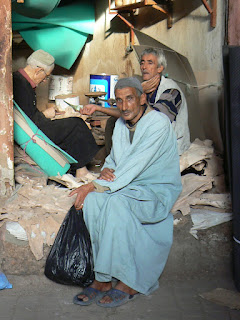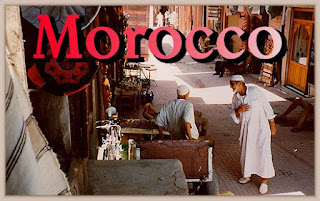We had two nights and a full day in Madrid before catching our flight back to Seattle, and spent it walking around seeing what was new since the last time we were here about 20 years ago. Recession? You'd never know it from the crowds at the cafes and tapas bars and on the streets at night. One nice change: Many of the streets have been pedestrianized. It's possible to walk most of the way between the Royal Palace and the Prado, for instance, on streets with no cars. The scene above is Saturday night on a pedestrian street near the Plaza Del Sol.
The new Metro (subway) link from the airport into the center of town is quick, efficient and cheap – one of the few bargains given the dollar's slide against the euro. Spain used to be a relatively cheap destination for Americans, but not anymore.
We booked our last night at the Hostal Luz. The Luz is one of those little hotels on the third floor of an old building that might have been run down a few years ago, but has since been spiffed up with remodeled rooms and private baths. We paid 69 euros for a roomy double with a new toilet and shower. The location near Opera and the Plaza del Sol was excellent, and the weather a beautiful 76 and sunny. We walked across town to the museum quarter, where, besides the Prado museum, there are several interesting sites within easy walking distance.
Above is the Royal Botanical Garden, 20 acres of trees, shurbs, plants and flowers in a beautiful park-like setting. Admission is a bargain at 2 euros. Nearby, we spotted this cafe. Any guesses what it is? A friend of mine guessed that it was a wine bar. Notice the comfy faux leather high-back chairs, the wood- grain tables and high windows.
This is a McDonald's across from the botanical garden. You can sit by the windows and relax over a beer with your Big Mac ($5 at current exchange rates). I'd say Starbucks is in for some competition of McDonald's decides to import this concept to the U.S.
Normally a train station would not be on a list of sites worth seeing, but Madrid's Atocha station near the Prado is worth a stop to see the tropical garden added in 1992.
We decided to pass on a visit to the Prado this time, and instead take in some of the public art along the Paseo del Prado, then wander around the galleries in the modern art museum (Centro de Arte Reina Sofia) housed inside Madrid's first public hospital. What a wonderful use of an old building this is. A glass elevator carries visitors to the various floors, with views all over the city. Picasso's Guernica is to this museum what the Mona Lisa is to the Louvre in Paris. It's impressive, but there's much more to see, including lots of Miro and Dali. This is a very accessable museum, and the price is right on Saturdays after 2:30 p.m. when admission is free.
We didn't take full advantage of eating at the tapas bars, given the high prices and the crowds. Even “pinchos," what we could call small plates, were 4 euros and up for two or three small bites, and that was the stand-up-at-the-bar price. Prices go up 50 cents-1 euro if you sit at a table. No doubt this is fun way to eat. Order a drink and it comes with a free tapa, usually olives or potatoes.
Hard to say where our travels will take us next, but most likely to Asia, Eastern Europe, South America or the Middle East where the dollars buys more than in the big Western European cities. For now, hasta luego from Madrid, a wonderful destination in itself and a convenient jumping of point for a visit to Morocco.
















